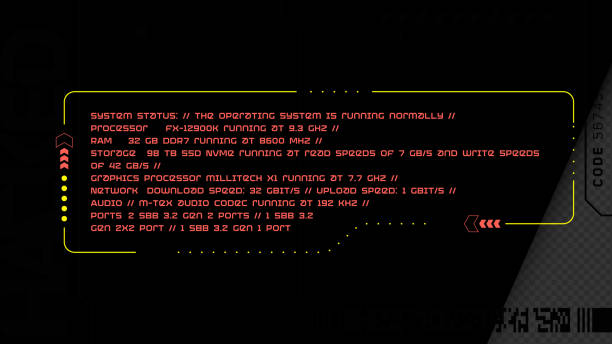Introduction
When you hear that legendary opening crawl Star wars movie fx maker codes, backed by John Williams’ booming score, something stirs deep inside—yep, you’re entering the Star Wars galaxy. From lightsabers slicing the air with that unmistakable hum to TIE fighters screaming through hyperspace, the visual effects (VFX) of Star Wars have become as iconic as its characters. But here’s the kicker: behind all that intergalactic wonder lies an intricate system of creativity, technology, and, yes, even a little coding magic.
This brings us to the intriguing phrase Star wars movie fx maker codes. At first glance, it sounds like some kind of cheat code from an old-school video game, right? But really, it reflects the idea that special effects—the lifeblood of Star Wars—aren’t just about green screens and CGI; they’re built on countless codes, tricks, and formulas that make impossible worlds feel real.
So buckle up, grab your lightsaber (or popcorn, whichever you prefer), and let’s dive into the hidden world where Hollywood wizardry meets digital creativity.
What Exactly Are “Star Wars Movie FX Maker Codes”?
You might be wondering—are these actual codes typed into a computer, or more like filmmaking hacks whispered among special effects teams? The truth is, it’s a bit of both.
-
Coding & Algorithms: Today’s VFX relies heavily on programming languages, simulation codes, and rendering engines. Imagine writing lines of code that make explosions ripple like a plasma storm—yep, that’s part of it.
-
Creative “Cheat Codes”: On the flip side, there are filmmaking shortcuts—what pros might jokingly call “codes.” For instance, filming models against black velvet to simulate deep space? That’s an old-school code.
-
Fan-Made FX Apps: Let’s not forget the rise of fan-friendly FX maker tools. Some even advertise “codes” or templates that allow you to insert lightsabers or blaster shots into your homemade Star Wars video with a couple of clicks.
So when we talk about Star wars movie fx maker codes, we’re not just talking about literal programming. We’re also diving into an entire toolbox of secrets, workarounds, and digital spells that bring Star Wars to life.
The Early Days: Practical Effects and Hidden Tricks
Before computers could convincingly simulate galaxies, George Lucas and his Industrial Light & Magic (ILM) crew were basically inventing visual effects from scratch. And boy, did they have their share of “codes.”
Miniatures and Motion Control
Instead of coding pixels, they coded machines. Motion-control rigs were programmed to move cameras with mathematical precision around miniature models of X-wings and Star Destroyers. Every swooping shot had a coded path.
Optical Illusions
How did they make lightsabers glow before CGI? With reflective materials, rotoscoping (literally tracing frame by frame), and layering exposures. In a way, it was their own analog coding system—tedious, but groundbreaking.
Cheat Code Example: “The Vaseline Trick”
Did you know that early desert shots of Tatooine were made to look endless by smearing petroleum jelly on the camera lens edges? Talk about a practical fx maker code!
The Digital Revolution: Coding the Galaxy
When Lucas returned with the prequels in the late ’90s, the age of digital coding took over. Suddenly, the galaxy far, far away wasn’t bound by physical models alone.
CGI & Code
Entire battle sequences like the Droid Army in The Phantom Menace were generated through algorithms and scripting. Teams wrote “fx codes” to control crowd movements, lighting, and shading.
Particle Systems
Want to see an explosion ripple through space? VFX teams used coded particle systems, mathematical formulas simulating how dust, fire, and sparks spread.
Procedural Effects
Think of lava on Mustafar. That wasn’t poured into a soundstage—it was coded. Algorithms mimicked how molten rock moves, making the planet come alive.
So, when someone says Star wars movie fx maker codes, this is where it gets literal—lines of programming scripts driving every spark and shadow.
DIY Galaxy: How Fans Use FX Maker Codes
Of course, Star Wars isn’t just about Hollywood anymore—it’s about fans. With apps, editing software, and fan-made FX tools, anyone can become a Jedi filmmaker.
Popular Tools for Fans
-
Star Wars FX Maker Apps: Simple drag-and-drop templates for lightsaber duels.
-
After Effects Plugins: These mimic ILM tricks, letting fans code their own blaster bolts.
-
3D Modeling Software: Programs like Blender let fans simulate TIE fighters or AT-AT walkers with pre-coded physics engines.
Quick Codes to Try in Fan Projects
-
Overlay a glow filter to mimic lightsaber shine.
-
Use keyframe coding to animate saber swings.
-
Apply particle emitters for sparks when sabers clash.
In short, you don’t need Hollywood’s budget—just a little curiosity, some FX maker codes, and a lot of imagination.
Why Are These Codes So Fascinating?
Well, let’s face it: Star Wars isn’t just entertainment—it’s a cultural phenomenon. The reason Star wars movie fx maker codes capture imaginations is because they represent something deeper:
-
Democratization of Creativity: Anyone can play Jedi now, thanks to accessible FX codes and apps.
-
Behind-the-Scenes Magic: Fans love knowing how their favorite illusions work.
-
Fusion of Art and Science: It’s where coding meets cinematography, and creativity meets computation.
And honestly—who wouldn’t want to learn the secret codes that make lightsabers glow?
Common Questions About Star Wars FX
1. Did Star Wars really invent new special effects?
Absolutely! ILM pioneered countless methods, from motion control rigs to digital compositing.
2. Are Star wars movie fx maker codes real cheat codes I can enter?
Not exactly. Think of them as tricks, scripts, and digital shortcuts used by pros and fans alike.
3. Can I make my own lightsaber effect at home?
Yep! With apps or editing software, you can easily insert glowing sabers into your videos.
4. What’s the hardest Star Wars effect to recreate?
Realistic space battles and fluid simulations (like Mustafar’s lava) are among the toughest, since they require advanced coding and rendering.
The Future of Star Wars FX
The rise of virtual production—like “The Volume” used in The Mandalorian—has rewritten the rulebook again. Instead of green screens, entire environments are projected onto LED walls. And guess what? These rely on real-time fx codes built into gaming engines like Unreal Engine.
Imagine this: actors surrounded by 360-degree digital landscapes, coded to respond to lighting in real time. It’s like stepping inside the galaxy.
Conclusion: Cracking the Galactic Code
At the end of the day, Star wars movie fx maker codes aren’t just random jargon. They’re the language of creativity—the formulas, tricks, and secrets that transform ordinary footage into extraordinary adventures. From ILM’s practical hacks to today’s real-time rendering, these codes are the unseen force binding the galaxy of filmmaking together.
So the next time you watch a lightsaber duel or a starship chase, remember: behind that spectacle is a blend of artistry, coding wizardry, and a few clever “cheat codes” passed down through generations of FX makers.
The Force may be mystical—but the effects? They’re coded magic.







